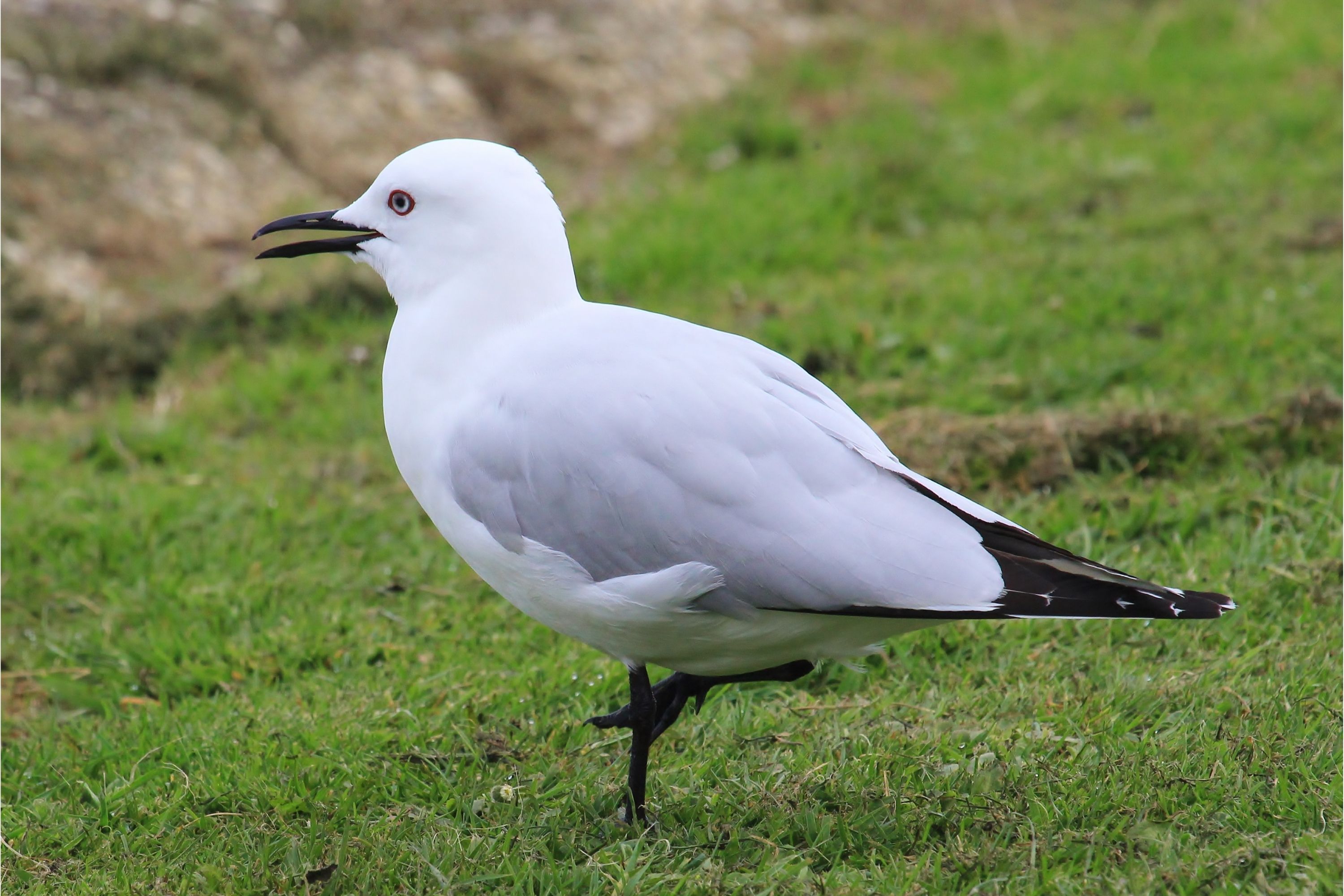Black-billed Gull
(Chroicocephalus bulleri)

Description
The black-billed gull (Chroicocephalus bulleri), Buller's gull, or tarāpuka (Māori) is a Near Threatened species of gull in the family Laridae. This gull is found only in New Zealand, its ancestors having arrived from Australia around 250,000 years ago. A healthy adult black-billed gull is typically 35–38 cm long, with a wingspan of 81–96 cm, and a weight of around 230g. The head, body, and parts of the wings are white, with silvery grey on the saddle and wings, as well as black edging on the wings. The gull also undergoes some seasonal color change. While typically black from February to June, the orbital ring is orange-red, red, or dark red the rest of the year. The legs, too, change from black to dark red and even bright red as the breeding season progresses, "possibly stimulated by presence of begging chicks and juveniles." Observations suggest the gull is sexually dimorphic, but there is a lack of published data to support this. There is likewise a lack of data in regard to geographical variation. Easily mistaken for the red-billed gull, the black-billed gull is distinguished by its black bill and is described as having a “more delicate appearance,” a “more buoyant and graceful” flight, and being “generally less noisy,” despite having a similar call. F1 and F2 hybrids between the two gulls have been observed, both hybrids exhibiting dark red bills. The black-billed gull is endemic to New Zealand. Up to 78% of the total population is estimated to be living in the Southland region, on the southern end of the South Island. In breeding season the gull is found on major rivers, especially braided rivers, lakes, and farmland. It generally prefers estuaries and coastal areas outside of the breeding season, though some can be found at breeding sites all year round. The gull is also attracted to urban areas, and "anywhere refuse of scraps available", such as rubbish dumps and freezing works. In 2019 some gulls established a colony of around 300 birds in Christchurch Central City. The species has been sighted occasionally on Stewart Island and The Snares, as well as at altitudes of up to 1700 MASL on the mainland. Various colonies also live on the North Island, though it was formerly only a "visitor," the first recorded breeding taking place at Lake Rotorua in 1932. Some South Island birds cross the Cook Strait after breeding season to winter in the North Island.
Taxonomic tree:







